Home Reviews ,,,,,
… [/banner]
Introduction: all Kindles (and more)
It is not from today that we talk about readers digital. The Kindle comes from a tradition that began with experiments on “digital inks” and on alternatives to the cathode screen first and then to LEDs for reading long documents, such as a book. The story of the Kindle is particular, because it is the demonstration that Amazon has not sat on the laurels of the paper book sales site, but has tried to innovate even at the cost of cannibalizing its own sales. Mission accomplished, as we know.
Cyber Layman has always carefully followed the evolution of this market, trying to test all the devices gradually marketed by both Amazon and its competitors, starting from first, the legendary Kindle landed in Italy at Christmas 2011: it seems like a lifetime but it is “only” six years old: we reviewed it here and then again here. Here instead we tried the Kindle Paperwhite, here the comparison of the Paperwhite with the first generation of Oasis, here the Kindle Voyage, here the first generation Kindle Oasis, released last year.
Then came the news, which we promptly reported, of a new generation of Kindle Oasis. Salient features, at least on paper: water resistance, a lot of memory (8 to 32 GB compared to 4 GB of the other Kindles) and the 30% larger screen, with a diagonal of seven inches. The new design eliminates the cover with built-in battery (which was a particular thing because it substantially increased the autonomy of a device that was otherwise too thin and light to be on par with the battery month of the other Kindles). We could not fail to try this version too and in fact we immediately got the new Kindle Oasis 2017 in the 8 GB WiFi only version (the other two versions have 32 GB of memory and are available both with WiFi only and with the 3G connection without sim and free for purchases and experimental navigation).
The thing that immediately raised perplexity is the price: in fact, the three models of Kindle Oasis 2017 cost respectively 249.99 euros for the model 8GB WiFi, € 279.99 for the 32 GB WiFi model, € 339.99 for the 32 GB WiFi + 3G model. These are the highest prices of the entire series of Amazon devices, but quite in line with the flagship products of the competition.
Speaking of competition, remember that we have also tried a long series of other devices, starting with the Kobo Touch and Glo, passing to the Kobo Aura One revised here too and then other ereaders such as the Tolino Vision HD 4 (Tolino was then bought by Kobo). In short, a world full of readers to choose from, but paying attention to some differences.
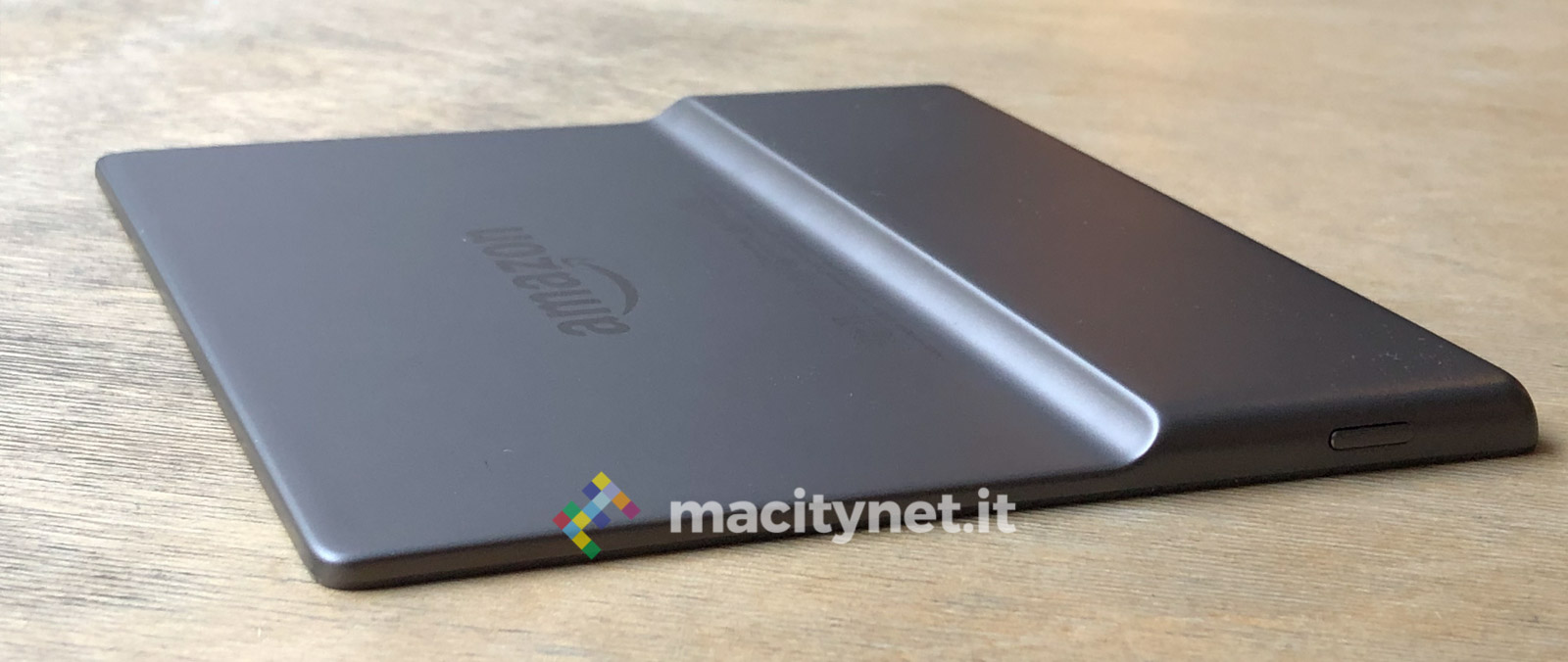
Limits and characteristics of the “Kindle system”
One thing that is often not imagined before “entering” the world of eBook readers is that there are constraints dictated by the compatibility of books , that is, of the stores, which very often impose the digital DRM lock on books, binding their reading only to some devices. The thing is very clear in the case of the Kindle, which supports Amazon's DRM and two formats that have become proprietary (i.e. AZW3 and Mobi) after being purchased from third parties (they are distant evolutions of the PRC format used on Palm handhelds, perhaps the first , real mass ereaders, even if they don't have a real store). The rest of the world, on the other hand, has agreed on the ePub format in two different variants: this is also the case for the Apple iBook Store, but also for the various Italian stores (from Mondadori to Ibs, from Feltrinelli to Giunti) not to mention the independents who also sell books from other publishers but without DRM (i.e. with a social DRM), such as Bookrepublic.
Buying a Kindle to discover that you cannot read the books of others digital stores, and vice versa, can be a nasty surprise. Although there is no shortage of solutions to mitigate this problem. The first, if you decide to buy a Kindle but also want to read third-party books, is the system that Amazon makes available to send personal documents (including ebooks) via email with a procedure explained on the site (we will return one day to explain it better, together with the management of Amazon devices and apps). If third-party books, from PDFs to ePubs, are DRM-free, Amazon will take care of converting them on its servers and then pushing them to our Kindle. The advantage is that they remain available in the cloud and, if we decide to also use other devices (for example because we change Kindles) or apps (for phone, tablet, PC, Mac, web) we can find the same documents and the same page synchronizations.
Another way is to create a “repository” of our DRM-free books on your computer, for example those available on copyright-free portals such as the Gutenberg project for English and Italian and the Manuzio Liber Liber project for Italian. To organize your collection of volumes, better manage metadata (covers, summaries, edition information, etc.) but also to convert ebooks between various formats (including formats such as Doc / Docx and Pdf) from and to ePub, Mobi , AZW3 and dozens of others (there is a whole world, in fact), the unbeatable cross-platform open source software is called Caliber, and it's the true industry standard. We will make a tutorial later for those interested in using it, but the idea is that, in its basic functions, it is very simple to use, yet also powerful. It's free. Thanks to Caliber you can solve all the problems of synchronization and management of ebooks, provided that they are free from DRM. There are also solutions that allow you to pirate eBooks, or sites from where you can download them already pirated, but this is obviously illegal and the writer, as an author of books, can only stigmatize this practice. It should be noted that there are also successful authors, such as the Italian trio of Wu Ming or the American Cory Doctorow (here on Gutenberg), who make ebook versions of their books available on their website, which are regularly sold both in bookstores and in stores. digital. The solutions, as you can see, are there and there are many, even legal ones. However, it is enough to be clear about the compatibility problem of formats and digital padlocks.
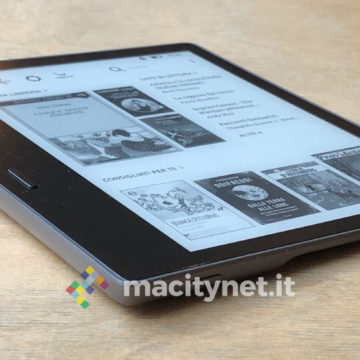
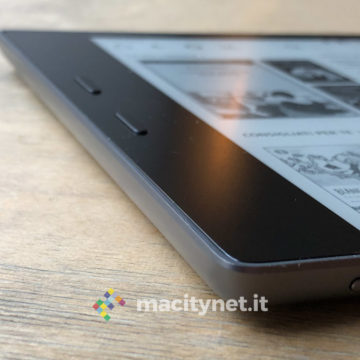
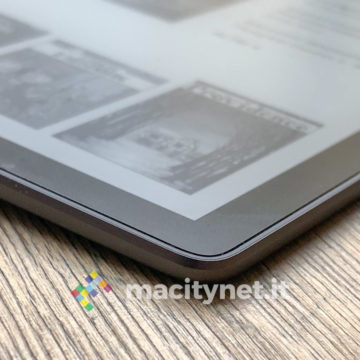
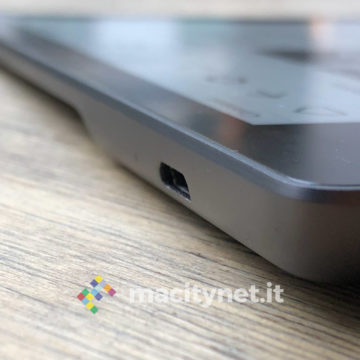
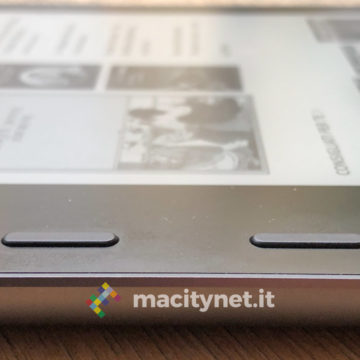
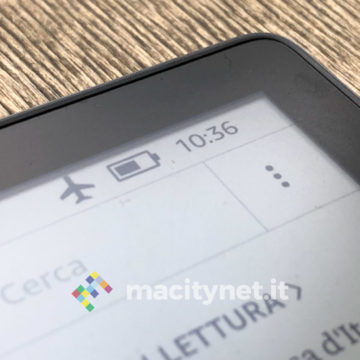
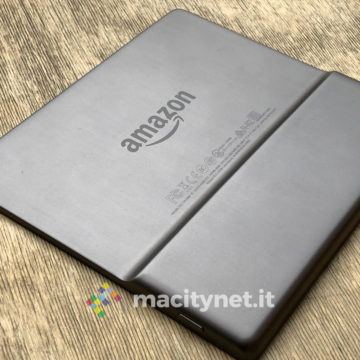
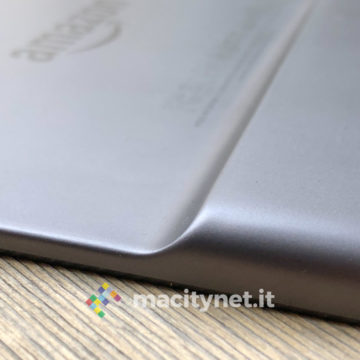
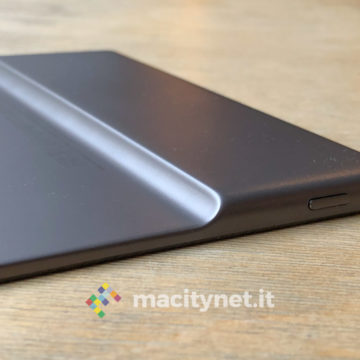
The features of the new Kindle Oasis 2017
So we come to the new Kindle Oasis second version. Amazon has decided to abandon the previous form factor with two “pieces”, a very thin body and a cover equipped with a battery. A system that certainly has advantages, but it also creates a bit of complication in the moment of use. In our review we wrote that it was “the most expensive among the Kindles on the market and the most expensive” and we confirm this judgment also for the current second generation, which is even more expensive if possible but has some undeniable advantages over the “basic” devices ”On the market.
The first selling point of the new Kindle is its form factor. Amazon sells it without a cover (as it does for all the other Kindles: the first Oasis was an exception because the cover was also half the battery) and has put the official cover on the market but immediately withdrawn, probably due to production problems. While waiting for it to come back, we are trying a third party one that we talk about separately. The new Oasis fits very well in the hand, it is light, absolutely reversible if you hold it with the right or left as the screen automatically rotates and the functions of the two physical buttons on the large side (forward-backward for pages) are automatically reversed. . The metal body is very solid and robust, the weight is very light.
The second strong point is the screen: seven and no longer six inches, which – since it is about a diagonal – means 30% more usable screen area. This results in both seeing more text on the page and seeing larger text. The technology is the same as the Paperwhite, therefore the same number of dots per inch (300 ppi) but with enhanced lighting: 12 LED points instead of 10, to reach a larger area. The lighting is adjusted automatically, but the feature can be disabled.
The third strong point, which further differentiates it from all other Kindle devices and puts it in line with the flagship ones. made by Kobo, is waterproof, ie IPX8 (immersion in fresh water up to 60 min at a maximum depth of 2 meters). Translated: you can go to the beach or the pool without fear that a sketch will ruin it, just be careful in case you bathe with salt water to clean it well. Warning: do not try to use it to read underwater, as it will most likely get damaged. As for the iPhone 8-X, another type of device with IPX8 certification, it is liquid resistance, not diving skills: those it has, to remain in the Apple world, for example the Apple Watch Series 3, com which you can go swimming in the pool or the sea.
Another strong point is the memory: compared to the 4 GB present in the other Kindles, so far judged sufficient by Amazon to manage libraries also of large format (there would be 2,800 books, according to the Seattle giant), the Kindle Oasis 2017 starts with 8 GB (the amount of memory available to the Kindle Paperwhite Manga edition, on which we will return in a moment) to get to 32. Why so much memory? Ebooks do not “grow”, but the use of texts with images probably grows, both for illustrated books and also for comics. It is no coincidence that a moment ago we mentioned the Kindle Manga edition for the Japanese market, which paved the way for the possibility of buying and reading Japanese comics (typically in black and white and small format) on the American device. In this sense, the increased screen and memory would seem to lead the way to a similar reasoning on the international market.
For the rest, the Kindle Oasis 2017 lasts for weeks (depending on what you read, if you keep the connection and lighting on), it weighs 194 grams (the basic Kindle Touch weighs 161 grams, the Kindle Paperwhite weighs 205 grams (WiFi) or 217 grams (3G), the Kindle Voyage weighs 180 or 188 grams) while the dimensions change little compared to previous generations because Amazon has chosen an almost borderless design (in three sides out of four: the fourth has a very comfortable grip) scoring a 159 mm x 141 mm x 3.4–8.3 mm . The basic Kindle Touch measures 160mm x 115mm x 9.1mm (it is thicker), the Kindle Paperwhite measures 169mm x 117mm x 9.1mm and the Kindle Voyage measures 162mm x 115mm x 7.6 mm.
The old Kindle Oasis measured was 30% thinner and 20% lighter than any other Kindle of the time. On the screen side it was only 3.4mm thick, weighed 231 grams and had measurements that are 142mm by 122mm by 9mm (at the thickest part).
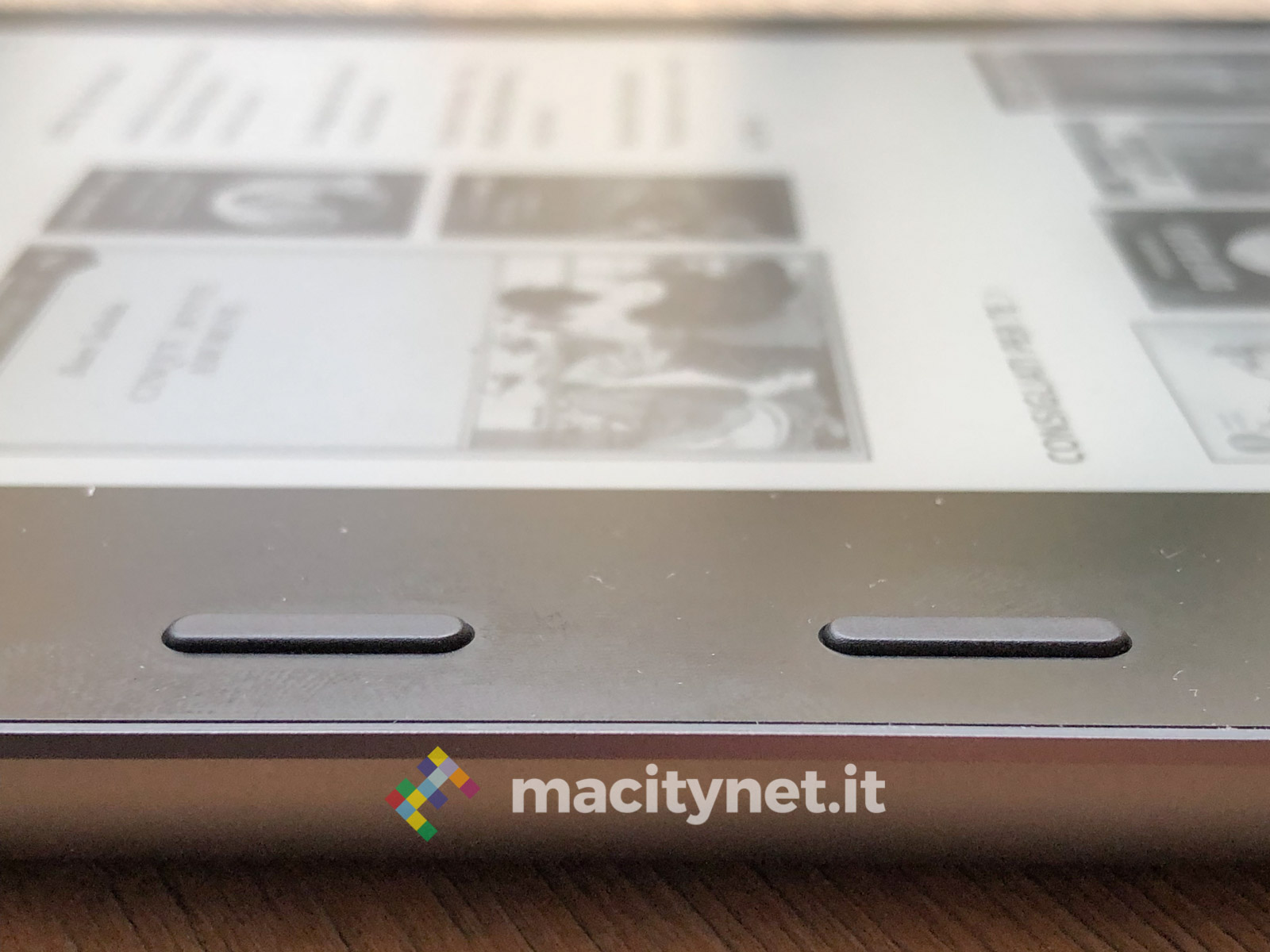
How the device works on the road
A small premise: the writer has been using eBook readers for twenty years as an alternative to paper books. The house is full of paper books but also the various devices on which the digital ones have passed are always well filled: from the very old Palm of twenty years ago to the latest Kindle. In particular, over time the writer has built up a considerable habit of reading on paper at home (especially non-fiction and business things) and on Kindle while traveling or in any case when you go out and go around the city (especially novels).
Purchases are made both from the Amazon site and directly from the Kindle Store within the Kindle device with the same ease, while the availability of a robust library stored on Caliber allows access also to many other ebooks accumulated over time. Amazon also offers a good number of out-of-copyright books at no cost or very low cost (fractions of a euro), so let's say that with a Kindle you never miss the opportunity to read something.
We have already illustrated the new interface that Amazon has made when we have o reviewed the first Kindle Oasis: much more efficient and useful for “discovering” new content. According to the writer, the book management system is more penalizing: a faster system would be needed, which allows, for example, to select multiple books at once and move them from one collection to another. Kindle Oasis 2017, which has a power button on the short part of the device, proves to be too traditional and “still” uses micro-USB rather than evolving towards a more expensive USB-C (but with such a high price tag probably would have been in it). In the package Amazon puts the cable as usual but not the power supply, rightly assuming that we all have at least one charger for mobile phones (Apple's ones are fine too, since the compatibility is in the USB-A plug side). There is no micro-SD slot, as a constant choice over time, and instead there is a small LED that informs that the device is working, charging, discharged.
The Display response, despite the extra thumb, is possibly even faster than the previous generation. The passage from 15.2 cm to 17.7 cm diagonal, with the consequent increase in the surface and therefore in the absolute number of points to be managed, did not in fact create a problem with the refresh or response speed of the interface, which is not certainly fluid and instant like that of a mobile phone but it is no longer even (for some time) detached from reality like that of the first ereaders.
Reading on Kindle is, on the other hand, extraordinarily pleasant. Amazon has increased the number of fonts available, with the AWS3 format (unlike the Mobi one) it is also possible to have books with integrated fonts, the screen is large and pleasant, the response of the device very fast. Going out during the Christmas period does not allow you to appreciate the flexibility for the pool or beach, but a simple quick test under the tap of the sink at home confirms that if nothing else the appliance “resists” a few seconds under water.
The purpose of the Kindle is increasingly to become a container that disappears and instead shows the contents inside it, that is, what the important things are. The quality of digital books is tending to grow more and more and the use of a device capable of enhancing the content by giving it adequate space but essentially maintaining the same dimensions is an excellent uselessness.
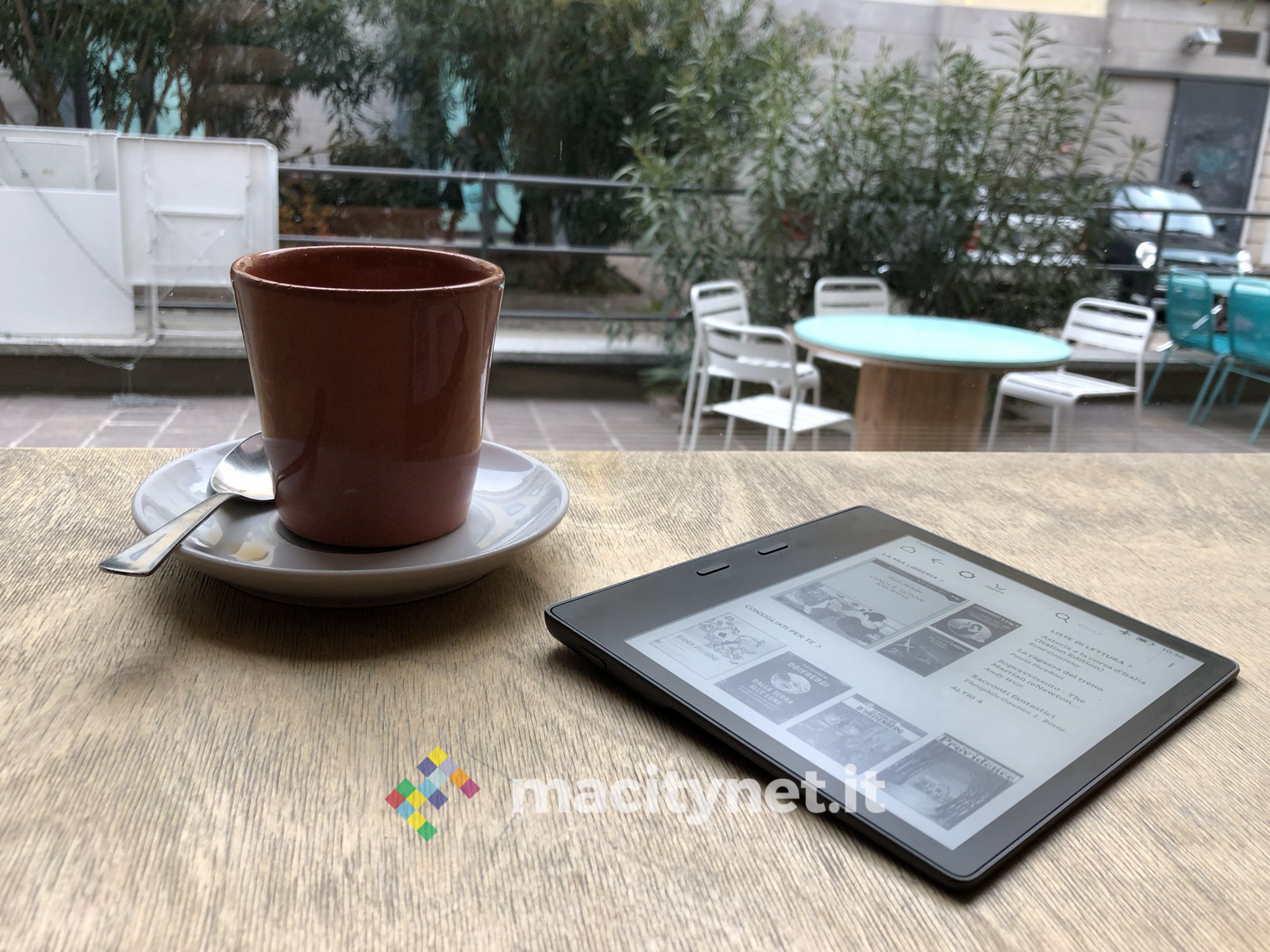
In conclusion
At the moment we write the cheapest Kindle is the “old” Kindle Touch, which costs 69.99 euros. Then there is, in promotion. at 109.99 instead of 129.99 euros, the Paperwhite model, which is what really makes the difference compared to the “old world” of Kindles and that of the new ones. Then, at 189.99 euros, the Kindle Voyage, perhaps the most interesting also for its power and flexibility of use (it has a very nice cover sold separately, which also acts as a support. However, the price of this device has already been considered for a long time. too high.
Instead, taking a further leap, you get to the Kindle Oasis 2017, which starts from 249.99 and “rises” quickly to 279.99 euros and then to 339.99 euro. It has all the options you can imagine, including luxury screen, automatic light adjustment, better ergonomics than classic Kindles, aluminum frame, enhanced memory. Is it worth the extra money and above all?
In our opinion, yes. Of course, you can do without them, because starting with the Kindle Paperwhite they are all good even if, in 2017, we would avoid the Kindle Touch basically because of the non-backlit screen and because it lacks the WiFi + 3G version. But the Kindle Oasis 2017 has that little bit more that allows us to justify and the higher expense (up to triple compared to the Paperwhite) and that is a really pleasant and advanced design, a more “comfortable” screen, waterproofing and greater capacity.
last point, there is an observation to make: it could be that in the coming months Amazon decides to open a new front for comics. Or not. It is a hypothesis that the company is certainly considering, also because this market is substantially missing when it comes to eBooks and completely digital media. US comics and a lot of the material available to buy in the world are based on color, and therefore on Kindle they would have a lower yield. We tried with what is on the Amazon store, which is a volume of Asterix, but the results are disappointing. Despite the increased size of the screen, the Asterix page is too large, it requires constant movement to be seen well and the slowness is felt. In addition, the shades of gray on the eInk screen tend to dull and turn off too much the cartoon about the Roosters, which is based more on colors than contrasts of brightness. In short, judging from this first taste the potential is there but it does not reach the bottom.
For everything else, Kindle Oasis 2017 costs more but is superior in every respect. Is this superiority worth the difference in expense? Here the answer depends on your wallet, because the overall figure is high but not huge: if you can afford it you will not regret it. If it costs too much, not bad: a Paperwhite or a Voyage is perfectly fine.
Pro – Very good screen – Memory capacity – Top design and dimensions – Waterproof!
Cons – The high price compared to other models – Not ready for comics yet
,,





